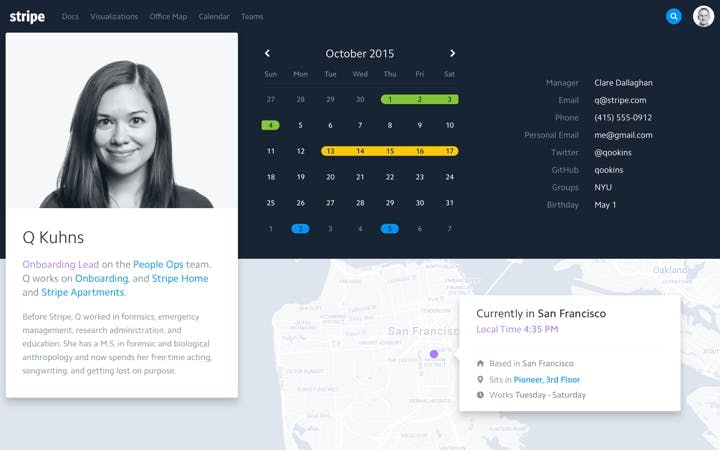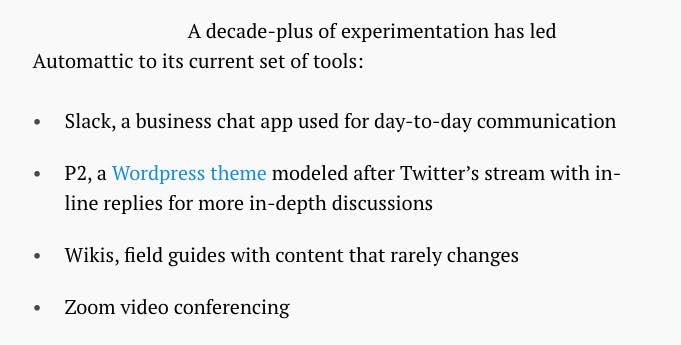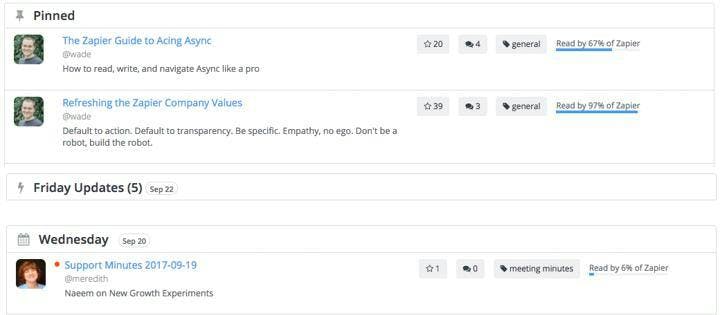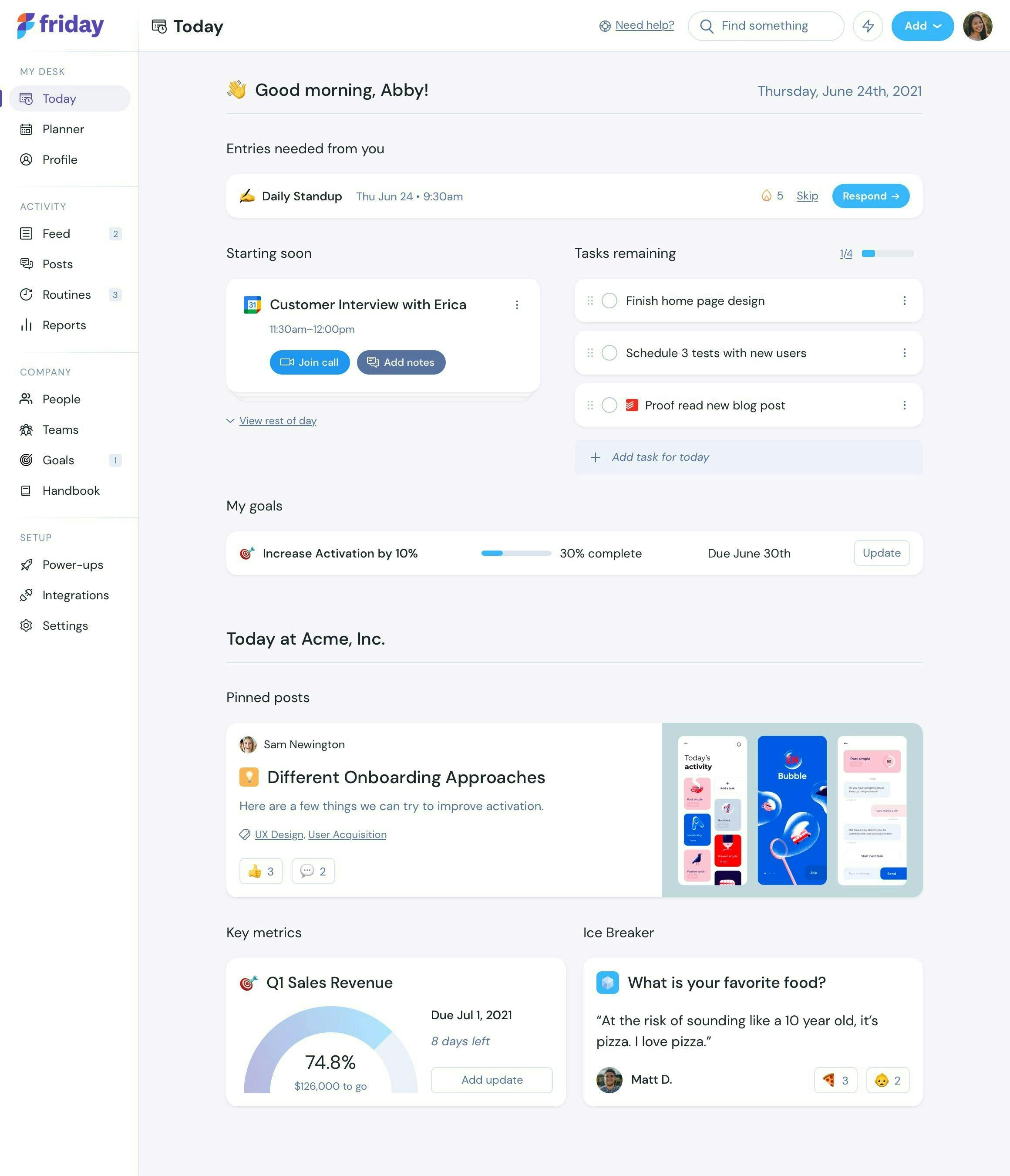Why are remote companies building their own intranet?

Over the last year, we've seen a few fully distributed companies (GitLab, Invision, Automattic) pass the 1000+ employee mark, with many more on the way. A few years ago, I doubt you would have been able to find any companies where this was the case.
One thing I've noticed with several of these companies is that they are investing in communication and productivity tooling, similar to an intranet, to help employees stay connected. At it's core, these companies have built a complementary tool to workplace chat (Slack) that acts like a modern-day "intranet".
In this post, I'll outline why this is happening and the broader implications that you should be aware of.
But first, here are the examples of hand-rolled tooling to establish some context.
Stripe: Home
As you may recall, in 2019, Stripe announced that their fifth engineering hub would be remote. They have also built their own tool called Stripe Home. Here's how they describe it:
"Home is the source of truth for who we are, what we’re doing, and why—and a platform for enabling individuals and helping them get to know one another."

Stripe Home features employee profiles, a team directory, and easy access to documentation via confluence.
Automattic: P2
Automattic has also created their own internal tool called P2 - it's a modified WordPress theme that functions like a forum for more longer-form discussion. Here's how it fits into the communication stack.

Zapier: Async
Next up, Zapier has their own internal tool, called Async. Here's how they describe it:
"Async is an internal tool we built. It's sort of like a blog meets reddit. This is the place where we surface important conversations that might get lost in the fast-paced Slack. It replaces internal email and acts as a great archive for anyone on the team to reference old discussions and keep up with company updates. Slack is where we talk about work, while Async is where we share work with the rest of the team."

If you are a Zapier employee, async is where you can share and read weekly updates, meeting minutes, etc. I've had some interesting conversations with the folks over there and they have continued to invest and improve this tool over the years.
Shopify: Vault
The list continues. Now let's look at Shopify, another fast-growing distributed organization who has created their own remote work intranet, called Vault. You can listen to the CTO chat about the product in the video below:
This product is heavily focused on the current state of projects, but it's incredibly robust and one of the most sophisticated internal platforms I've ever seen.
Why is this happening?
A simple explanation is that these organizations are trying to help people stay connected. This is a challenge when people are distributed and not in the same location.
I've worked remotely for a few organizations over 6+ years, and I categorize remote work communication problems into three buckets:
- What are people working on?
- Who do I work with?
- Why does my work matter? How does my work connect to a bigger purpose?
If you look at these issues above, they are problems that co-located companies face as well ;)
The difference is that the office functions as a safety-net, increasing the probability that you will passively answer these questions through observation and (most-likely) information-sharing meetings.
In a remote company, if this information doesn't persist, it doesn't exist. Meetings are expensive and difficult to coordinate. Writing things down asynchronously is a much cheaper and scalable way to communicate internally.
The issues with making your own intranet
As we look at these custom-built tools, a natural entrepreneurial reaction might be to create a software product that functions in a nearly identical way to these examples above. After all, if it works at Stripe and Automattic, it must be good for everyone!
I believe there are two problems with this view:
1.) Position power masks adoption woes
Org-wide tools like intranets oftentimes require position power to convince the broader popular to use it on a regular basis. Bluntly put, position power could be defined as, "you need to use this tool. If you don't, we will fire you."
It's not uncommon for HR departments to roll out systems like intranets - oftentimes this fails due to a lack of position power to drive regular usage. With enough role power and pressure from the top, you can convince people to use pretty much anything.
2.) Each company is different
Over time, these internal tools have been customized to solve an acute pain vs. a broader pain. That's the benefit of rolling your own tool - you can change it to solve a specific pain your organization faces.
As you may imagine, a pain-point that one company experiences may not be indicative of a broader market need. With that being said, there are counterpoints to this argument (like Slack).
There's a gap in the workplace communication stack: Here's how we're working to solve it
At Friday, our focus is on solving the "what's going on" problem that distributed teams and scaling companies face.
Instead of jumping into ad-hoc project management tools to see what people are doing or sifting through the constant chatter in Slack, we think you should be able to login to a single tool to see and share what's going on at work.

Instead of holding regular update meetings or asking people to manually compile status reports, we've built a simple and mostly automated way to share regular updates about what you are working on, enabling the regular flow of information (in less time). It will be a tool you team will actually use on a regular basis. See how easy it is to get up and running:
Similarly to the hand-rolled tools mentioned above, we don't compete with workplace chat or project management software - we play a complementary role, rounding out the communication stack for the modern workforce.
Unlike the intranets mentioned above, Friday is building a solution that can easily be adopted in minutes. Over time, you layer on additional functionality as you go. If you tried to roll out an intranet for your entire company, it requires a ton of effort and behavior change.
At Friday, we think distributed teams will forge the future of work. I hope this post provides a practical example of how that works in practice.


